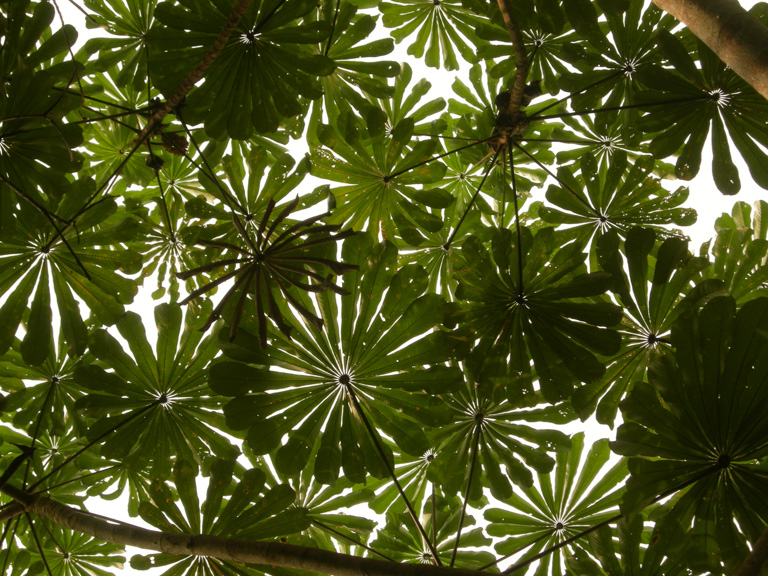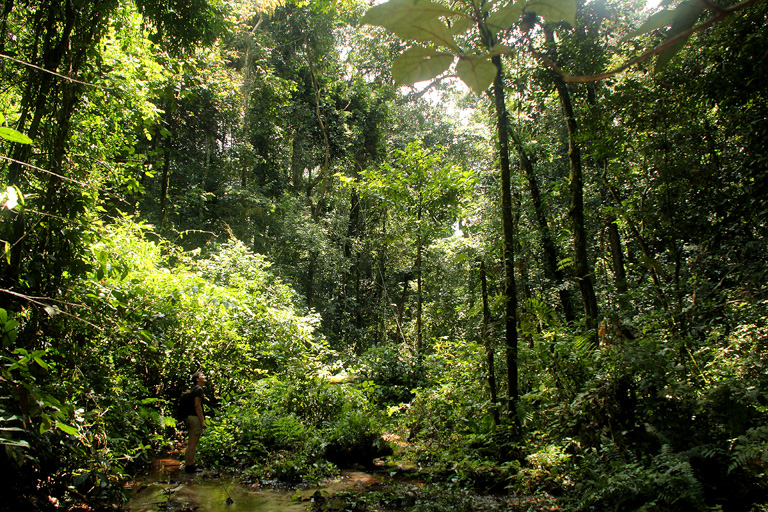- Research has shown that, in some cases, high-carbon forests support high levels of biodiversity.
- But a recent study, which looked at a wide variety of species groups, demonstrates that regrowth forests can support a greater number of representatives of some species groups.
- The findings support the conclusion that recovering forests should be included in conservation planning alongside old-growth forests.
Tropical forests are key defenders in the fight against climate change. They lock down around 25 percent of the world’s carbon in their canopies, trunks and soils, a function so crucial that they play a prominent role in the 2015 Paris climate agreement.
Research also shows that high-carbon forests can anchor richer ecosystems. This is a win-win situation for climate mitigation and wildlife conservation.
However, according to a recent study published in the journal Science Advances, the riches of high-carbon stocks are not shared equally among the various species found in forests. Forests that are in the process of growing back — for example, after they’ve been logged for timber — seem to provide ideal conditions for pioneer species not found in old-growth forests.

“In the case of slime molds, we think that this less-humid environment in regrowth forests might be a more optimal growing situation,” said Frederik Van de Perre, a biologist and doctoral student at the University of Antwerp in Belgium and the lead author of the paper.
Earlier studies have detected positive links between biodiversity and above-ground carbon storage. However, in one study, this positive effect was only visible when researchers drilled down to the relatively fine scale of 0.1 hectares (0.25 acres). According to a 2017 paper by ecologist Martin Sullivan of the University of Leeds in the U.K. and his colleagues, published in the journal Scientific Reports, the biodiversity-carbon relationship remains unknown at scales relevant to conservation planning.
Sullivan also critiqued another key study that found a positive biodiversity-carbon relationship, suggesting that the authors did not properly control for environmental variations such as elevation, temperature and precipitation.
“The protection of biodiversity needs to be considered alongside climate change mitigation, rather than [both] assumed to benefit automatically,” Sullivan told Mongabay in 2017.
Van de Perre and his colleagues decided to attack the much-debated problem from a different angle.
“When you read the literature, there are lots of papers saying [their research] is about biodiversity-carbon storage relationships,” Van de Perre said. “But actually, when you read those papers in detail, it turns out it’s about tree diversity. In my opinion, you can’t call that biodiversity.”

In their study, the authors researched a total of 10 different organismal groups.
“We at least tried to capture what biodiversity is to the fullest [extent],” Van de Perre said.
Working in the Democratic Republic of the Congo’s Yangambi Biosphere Reserve, they used old-growth and regrowth forests as proxies for carbon-rich and carbon-poor environments. The 10 species groups they investigated included shrews, ants, trees, leaf lichens and slime molds.
Previous research has looked at the relationship between mammals and carbon storage in tropical forests, but Van de Perre said that his team’s study had the “largest variety of species groups.”
It was also “the first to at least compare trees with other types of species,” he added.
The results did demonstrate a positive correlation between biodiversity and above-ground carbon storage, but only for trees and leaf lichens. The other eight organismal groups showed random, linear or even negative patterns of correlation.

Van de Perre suggested that random correlations might result from what scientists call “turnover,” which means that certain species from the same organismal group replaced others as the carbon stock increased rather than growing alongside them.
“We know of ants that are specialized on trees that occur in regrowth forests,” Van de Perre said, “and there are definitely [other] species [of ant] that only occur in old-growth forests.”
Shrews displayed a linear correlation, suggesting that all species in this group were equally suited to both carbon-rich and carbon-poor forests.
Slime molds, on the other hand, were the only organismal group to show a distinctly negative correlation, meaning that all species specialize in colonizing regrowth forests. This organismal group would undoubtedly lose out should regrowth forests be excluded from conservation initiatives.
The results add an important wrinkle to the debate around forest protection and biodiversity.

“The general idea is that old-growth forest is important for its irreplaceability [and] regrowth forest is added value,” Van de Perre said. “But actually, creating and regenerating regrowth forests will help [both] biodiversity and carbon storage.”
In fact, recovering forests sock away carbon 11 times faster than old-growth forests, according to a 2016 study. However, when it comes to biodiversity, the importance of regrowth forests will most likely depend on their proximity to old-growth forests to facilitate species recruitment. According to Van de Perre, this phenomenon was the case in the forest plots where the team did their research.
“Forest regeneration will [therefore] benefit forest biodiversity both directly, by providing habitat for species adapted to early successional stages, and indirectly, by increasing connectivity and reducing [the] fragmentation of forests,” he said.
Banner image of a plasmodial slime mold by Myriam de Haan/Botanic Garden Meise.
Joshua Parfitt is a Mongabay intern based in The Hague, Netherlands. Find him on Twitter: @jjparfitt
Citations
Bonan, G. B. (2008). Forests and climate change: Forcings, feedbacks, and the climate benefits of forests. Science, 320(5882), 1444-1449.
Cavanaugh, K. C., Gosnell, J. S., Davis, S. L., Ahumada, J., Boundja, P., Clark, D. B., … & Sheil, D. (2014). Carbon storage in tropical forests correlates with taxonomic diversity and functional dominance on a global scale. Global Ecology and Biogeography, 23(5), 563-573.
Poorter, L., Bongers, F., Aide, T. M., Zambrano, A. M. A., Balvanera, P., Becknell, J. M., … & Craven, D. (2016). Biomass resilience of Neotropical secondary forests. Nature, 530(7589), 211.
Poorter, L., Sande, M. V. D., Thompson, J., Arets, E. J. M. M., Alarcón, A., Álvarez‐Sánchez, J., … & Bongers, F. (2015). Diversity enhances carbon storage in tropical forests. Global Ecology and Biogeography, 24(11), 1314-1328.
Sullivan, M. J., Talbot, J., Lewis, S. L., Phillips, O. L., Qie, L., Begne, S. K., … & Miles, L. (2017). Diversity and carbon storage across the tropical forest biome. Scientific Reports, 7, 39102.
Van de Perre, F., Willig, M. R., Presley, S. J., Bapeamoni Andemwana, F., Beeckman, H., Boeckx, P., … Verheyen, E. (2018). Reconciling biodiversity and carbon stock conservation in an Afrotropical forest landscape. Science Advances, 4(3).
